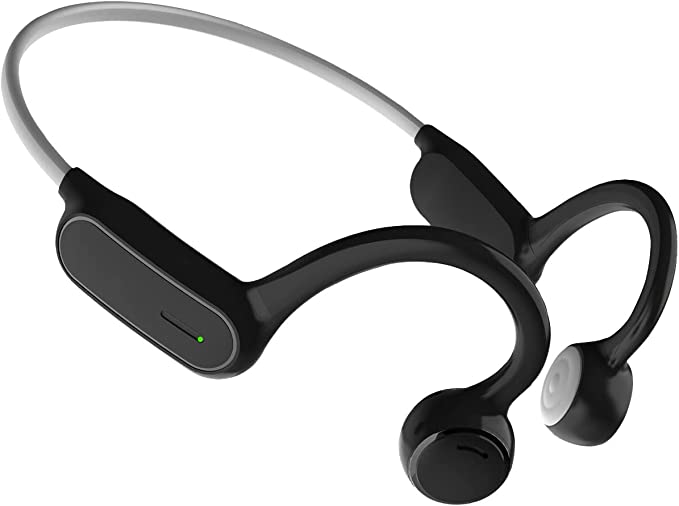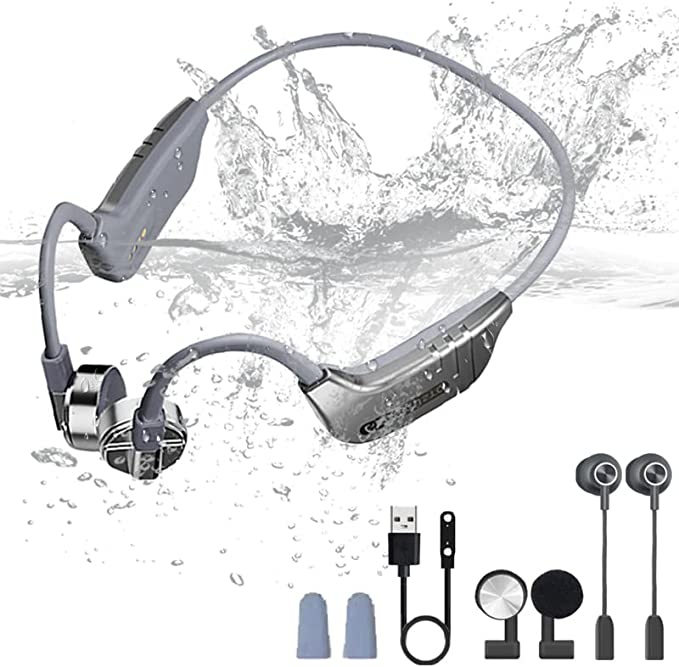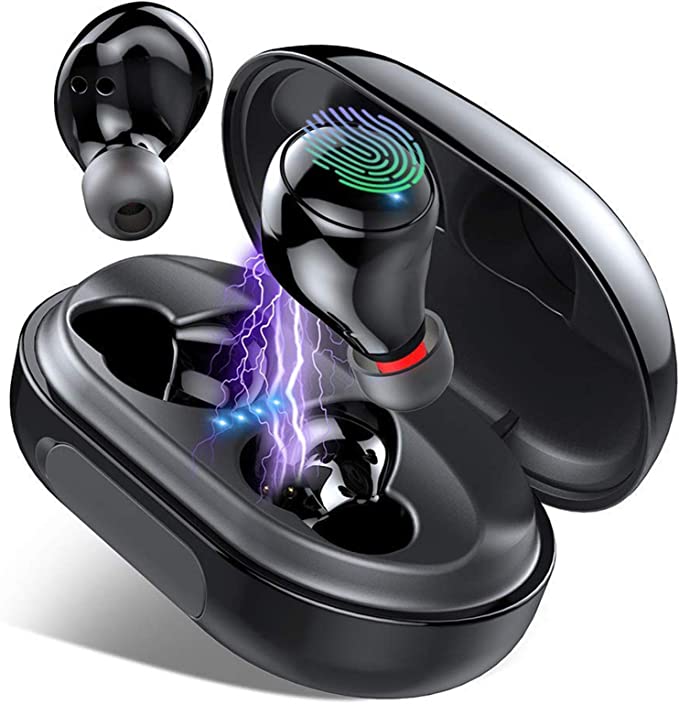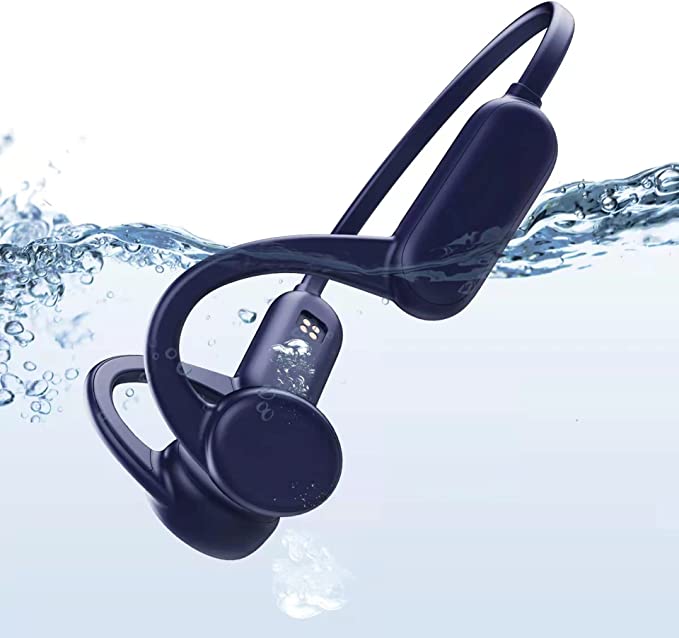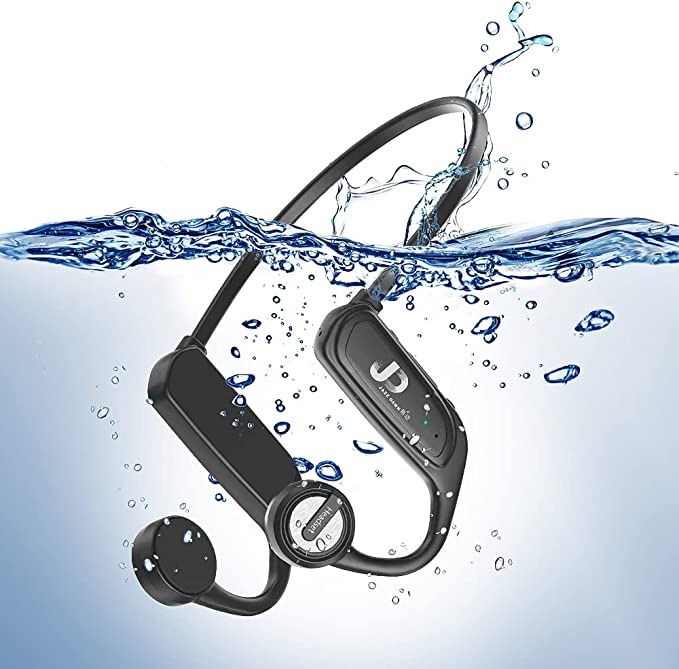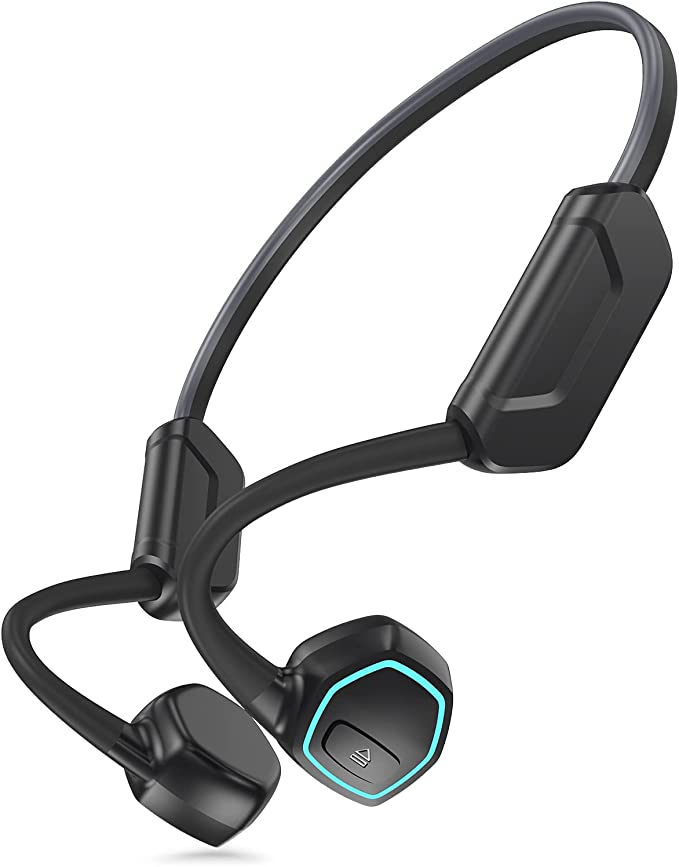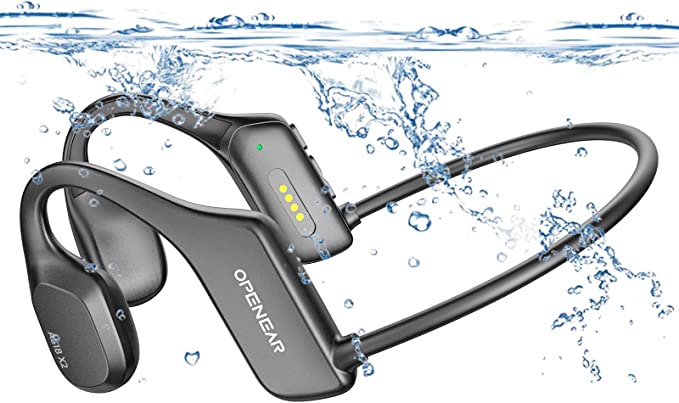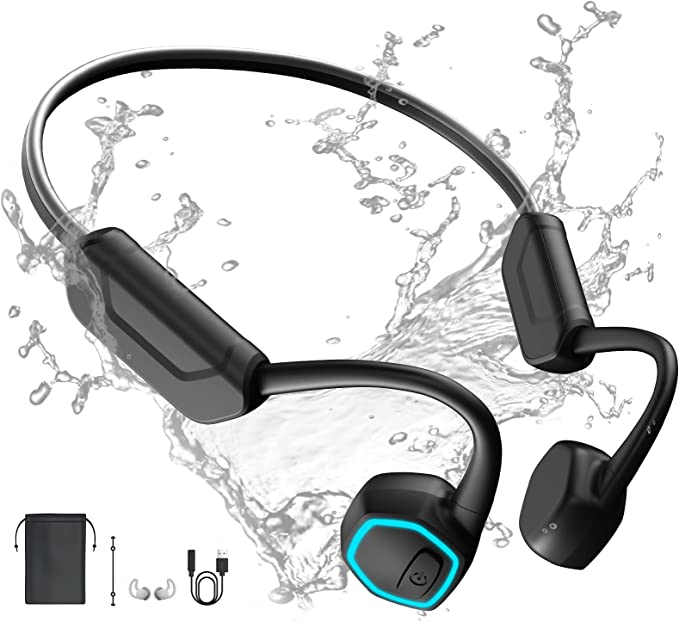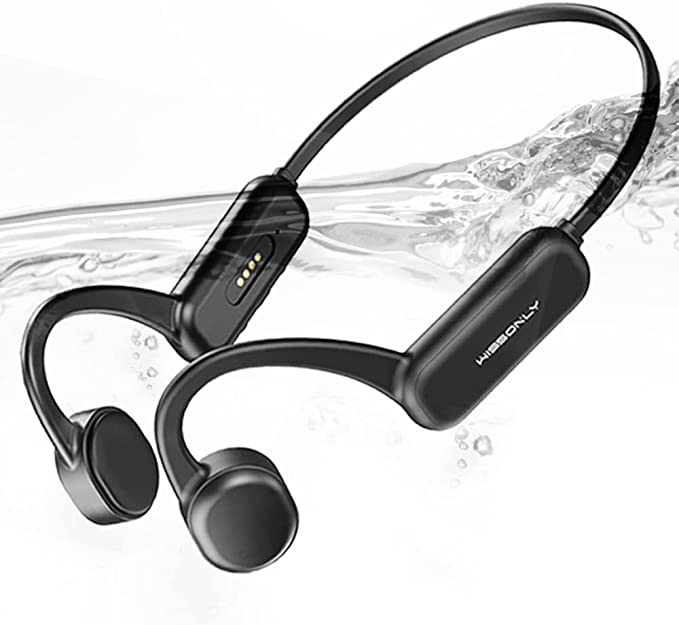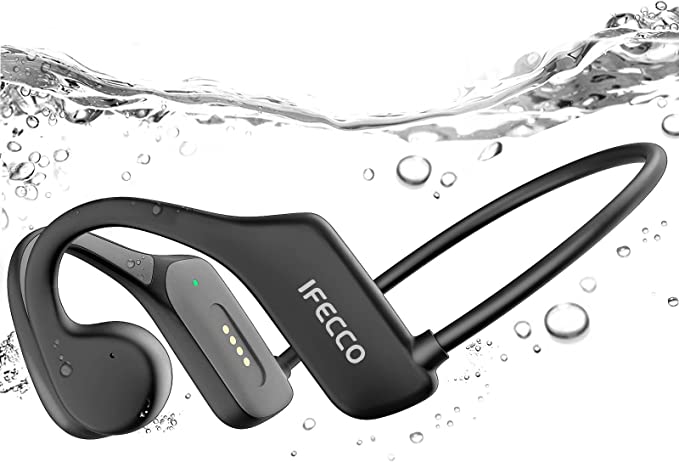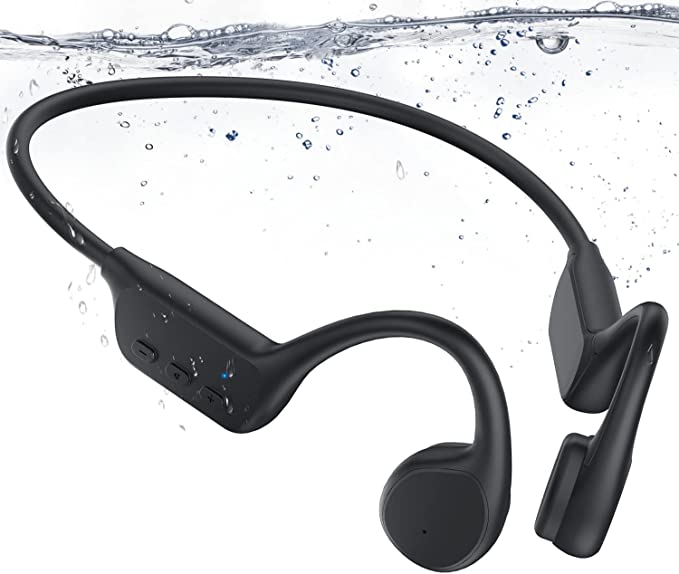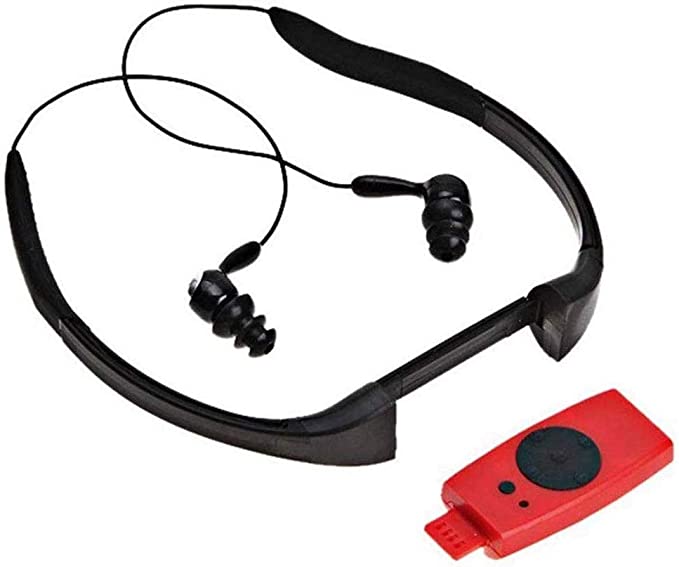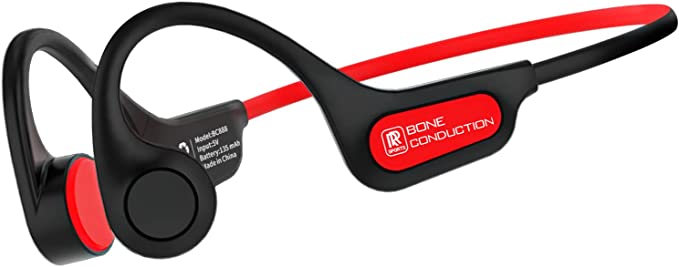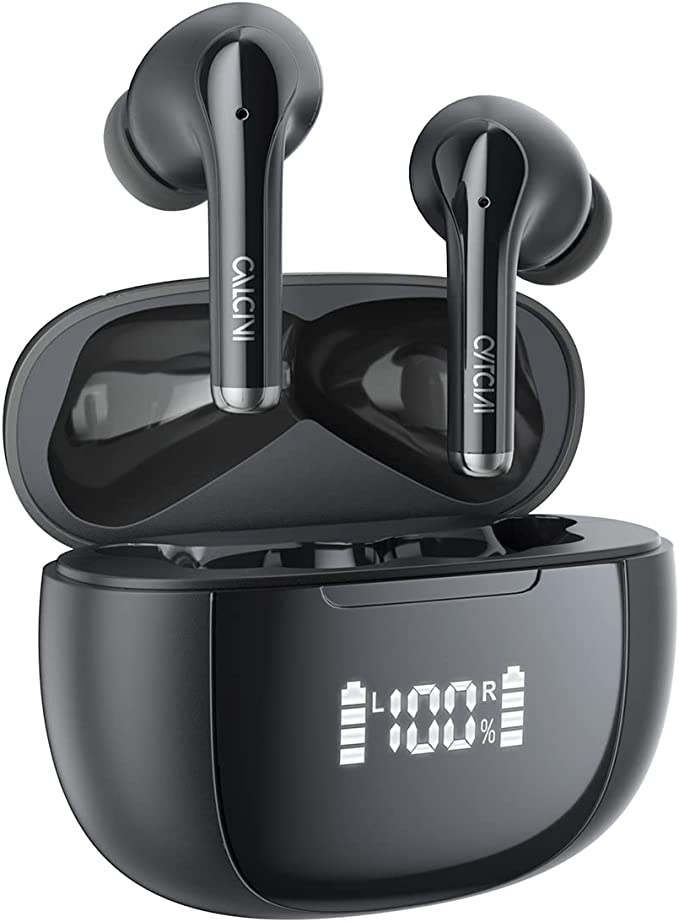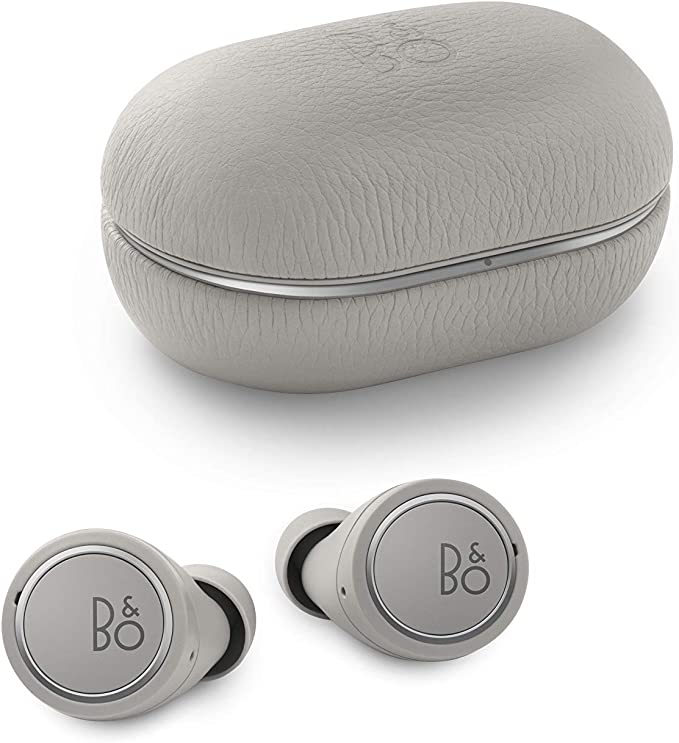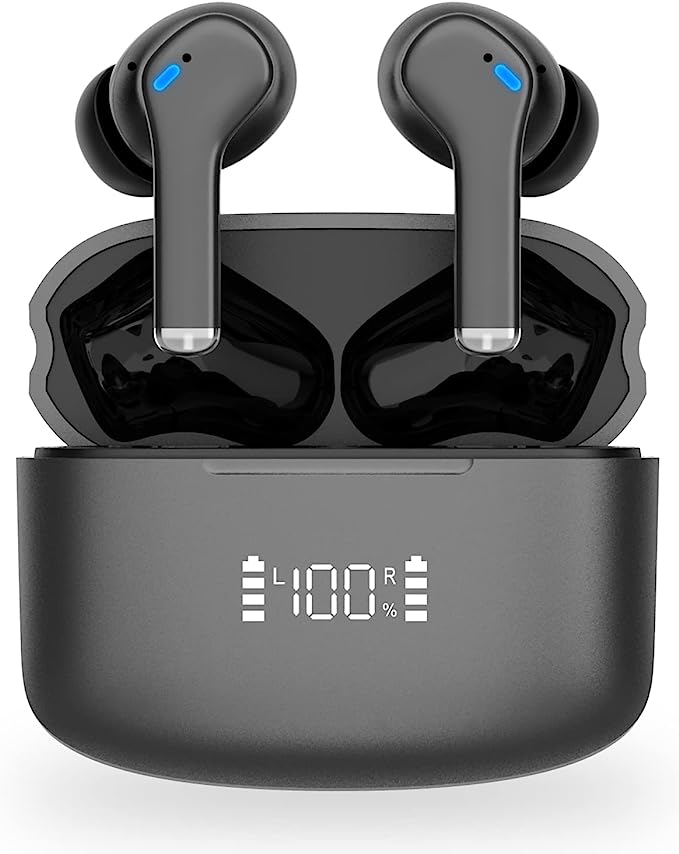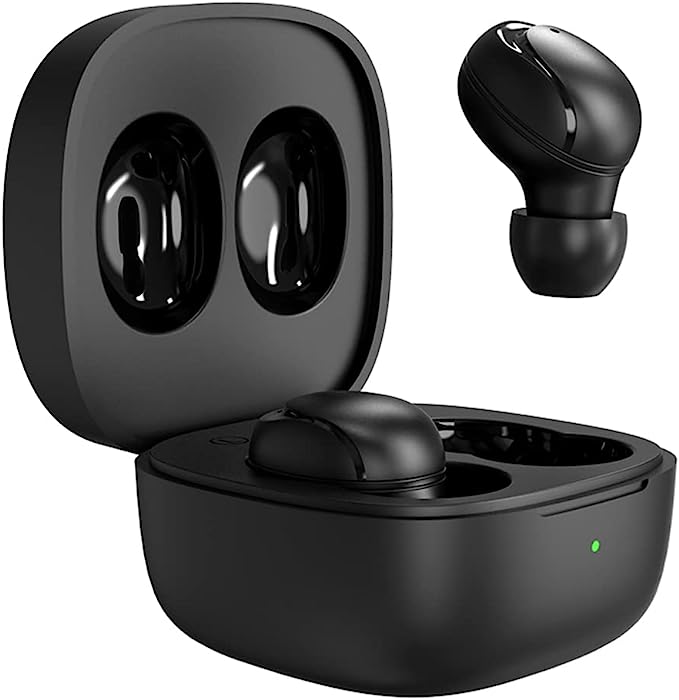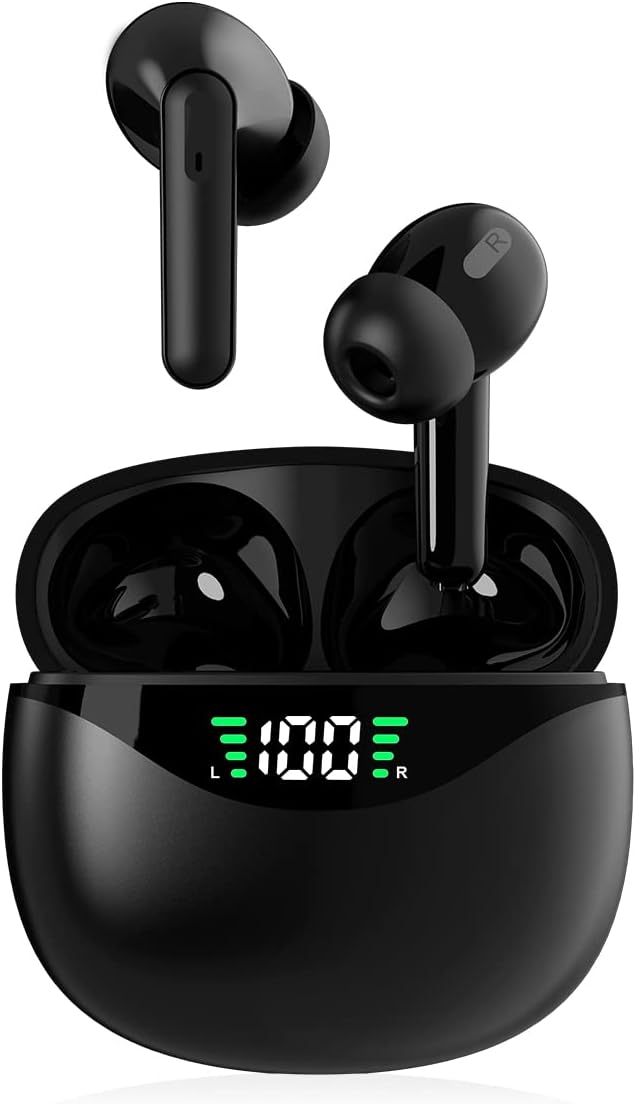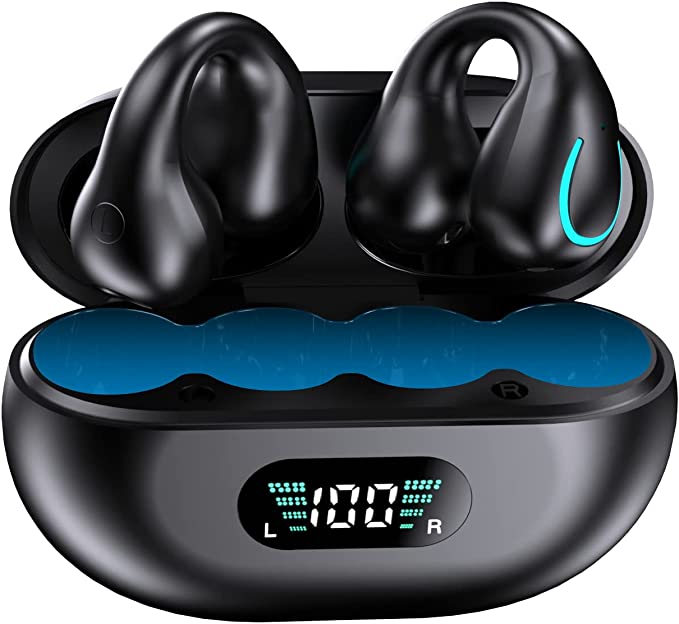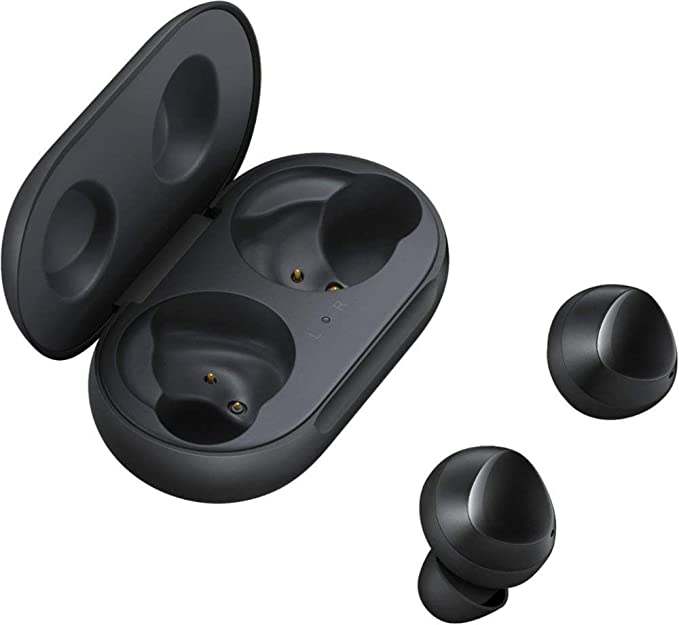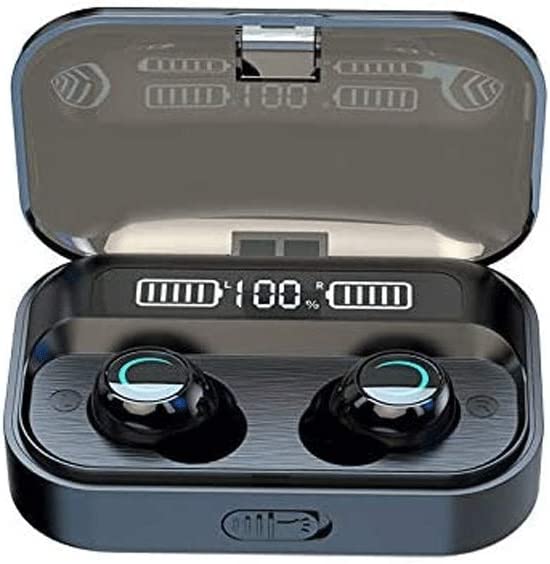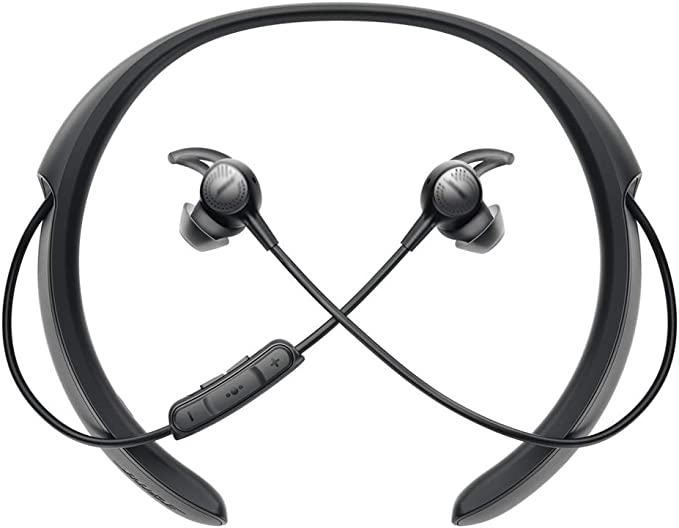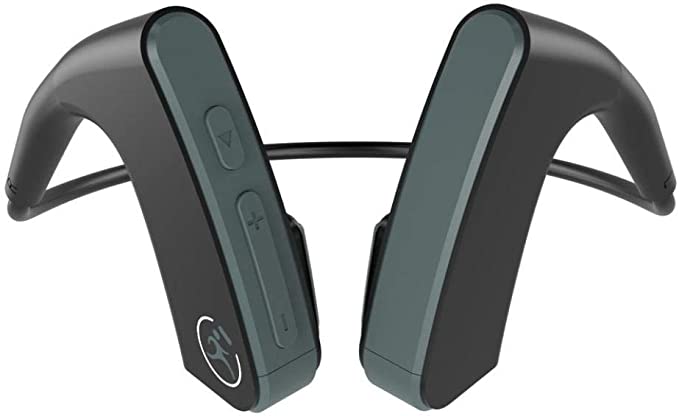TBIIEXFL TW16 Headphones: Waterproof Sound for Your Active Life
Update on Feb. 19, 2025, 12:59 p.m.
The Cordless Revolution: Embracing Wireless, Waterproof Audio
Imagine this: you’re mid-workout, energized, pushing your limits… and then, snag. Your headphone cord gets caught, ripping the earbuds out and interrupting your flow. Or perhaps you’ve experienced the sinking feeling of realizing your expensive headphones have succumbed to an unexpected downpour. These frustrating scenarios are becoming relics of the past, thanks to the rise of wireless and waterproof audio technology. The TBIIEXFL TW16 headphones are a prime example of this evolution, offering a blend of convenience and durability, all thanks to the power of Bluetooth connectivity and (potentially) robust waterproofing. Let’s delve into the science behind these features.

Bluetooth 5.0: The Wireless Symphony Conductor
Think of Bluetooth as the invisible conductor of a wireless symphony. Instead of physical wires, it uses radio waves to orchestrate the seamless transmission of audio between your phone (or other device) and your headphones. It’s a short-range wireless communication technology that has revolutionized how we interact with our devices.
But Bluetooth isn’t a new invention. Its roots trace back to 1989, at the Swedish company Ericsson. The name itself is a nod to the 10th-century Danish king Harald “Bluetooth” Gormsson, known for uniting Scandinavian tribes – a fitting metaphor for a technology that connects disparate devices. From its humble beginnings, Bluetooth has become a global standard, found in billions of devices worldwide.
The TBIIEXFL TW16 headphones boast Bluetooth 5.0, the latest iteration of this technology. What makes 5.0 superior? Several key improvements:
- Speed: Bluetooth 5.0 offers significantly faster data transfer rates compared to previous versions. While this doesn’t directly translate to better audio quality (that depends more on the audio codec used, which we’ll touch on later), it allows for a more responsive connection and quicker pairing.
- Range: The theoretical range of Bluetooth 5.0 is up to four times greater than Bluetooth 4.2. In the real world, with walls and obstacles, the TW16 offers a respectable 10-15 meters. This means more freedom to move around without your audio cutting out.
- Stability: Bluetooth 5.0 is engineered for a more robust and reliable connection, minimizing those annoying dropouts and stutters that can plague older Bluetooth devices.
- Power Efficiency: A key advantage of Bluetooth 5.0 is its improved power efficiency. This means your headphones (and your phone) can consume less energy while maintaining a strong connection, contributing to longer battery life.
How does Bluetooth avoid interference in a world saturated with wireless signals? It uses a clever technique called frequency hopping. Imagine a dancer skillfully navigating a crowded dance floor, constantly changing their position to avoid bumping into others. Bluetooth does something similar, rapidly switching between different radio frequencies (up to 1600 times per second!) to find the clearest channels for communication.
Behind the Scenes: The Pairing Process
Ever wondered what happens when you “pair” your headphones with your phone? It’s a carefully choreographed digital handshake. When you put your TW16 headphones into pairing mode, they broadcast a signal saying, “I’m here and ready to connect!” Your phone, when set to discover Bluetooth devices, listens for this signal. Once it finds the headphones, a secure connection is established, often involving the exchange of a unique identification code. This ensures that only your phone and headphones can communicate with each other, preventing other devices from interfering. This pairing process, while seemingly simple, is a testament to the sophisticated engineering behind Bluetooth technology.

Waterproof vs. Water-Resistant: Know the Difference
The term “waterproof” gets thrown around a lot, but it’s crucial to understand that not all waterproof claims are created equal. There’s a significant difference between water-resistant and truly waterproof, and this distinction is defined by the Ingress Protection (IP) rating system.
The Importance of IP Ratings:
The IP rating, typically represented as “IPXY,” is an internationally recognized standard that classifies the degree of protection a device offers against solids (X) and liquids (Y). The first digit (X) indicates protection against solid objects, like dust and sand, ranging from 0 (no protection) to 6 (dust-tight). The second digit (Y) indicates protection against liquids, ranging from 0 (no protection) to 9 (protection against powerful high-temperature water jets).
Decoding IP Ratings:
Here’s a simplified table illustrating common IP ratings and their corresponding protection levels:
| IP Rating | Solid Protection (X) | Liquid Protection (Y) |
|---|---|---|
| IPX0 | No protection | No protection |
| IPX1 | No protection | Protected against vertically falling water drops |
| IPX2 | No protection | Protected against vertically falling water drops when tilted up to 15 degrees |
| IPX3 | No protection | Protected against spraying water |
| IPX4 | No protection | Protected against splashing water |
| IPX5 | No protection | Protected against water jets |
| IPX6 | No protection | Protected against powerful water jets |
| IPX7 | No protection | Protected against immersion in water up to 1 meter for 30 minutes |
| IPX8 | No protection | Protected against continuous immersion in water under conditions specified by the manufacturer |
| IP67 | Dust-tight | Protected against immersion in water up to 1 meter for 30 minutes |
| IP68 | Dust-tight | Protected against continuous immersion in water under conditions specified by the manufacturer |
Materials and Techniques: How Waterproofing is Achieved
Achieving waterproofing in electronics is a significant engineering challenge. It involves a combination of clever design and robust materials:
- Gaskets and Seals: Rubber or silicone gaskets are used to create tight seals around vulnerable points, like buttons, charging ports, and seams in the housing.
- Hydrophobic Coatings: These special coatings, often applied at the nanoscale, repel water, preventing it from seeping into the device’s internal components.
- Sealed Components: Internal components, like the circuit board, may be coated with a protective layer to shield them from moisture.
- Ultrasonic Welding: This technique uses high-frequency sound waves to fuse plastic parts together, creating a watertight seal.
The TW16 and Waterproofing: A Word of Caution
Here’s where we must be completely transparent. The provided information for the TBIIEXFL TW16 headphones states that they are “waterproof,” but it does not specify an IP rating. This is a crucial omission. Without an IP rating, we cannot definitively say how well these headphones are protected against water. We strongly advise potential buyers to seek out the official IP rating before exposing the headphones to any significant amount of water. This is a good practice for any electronic device claiming to be waterproof.

The TBIIEXFL TW16: Features for an Active Life
While the lack of a confirmed IP rating is a significant caveat, the TBIIEXFL TW16 headphones do offer several features that make them appealing for users with active lifestyles:
-
Lightweight Design: At just 0.035 ounces (1 gram), these headphones are designed for comfort, even during prolonged use. A lightweight design minimizes pressure on the ears, reducing fatigue and making them ideal for workouts or long commutes. The material used, although not specified, likely contributes to this lightness – think specialized plastics and minimal internal components.
-
Long Standby Time: The 60-day standby time is a standout feature. This impressive longevity is achieved through a combination of low-power Bluetooth 5.0 technology and efficient battery management circuitry. The headphones are designed to consume minimal power when not actively in use, conserving battery life for when you need it.
-
Charging Case: The included charging case provides a convenient and portable way to keep your headphones powered up. The case itself houses a 400mAh battery, acting like a portable power bank for the earbuds. Each earbud contains a 50mAh battery. The mathematics are fairly simple. The case provides several charges to fully topped-up earbuds.
-
Music Playback and Call time: The earbuds offer 3 hours of music play back. And can support 3.5 hours of call time.
-
Charging time: The earphone only takes 1 hour to be fully charged.
A (Simplified) Look at Sound:
-
Headphone Drivers: Drivers are the heart of any headphone, responsible for converting electrical signals into sound waves. They’re essentially tiny loudspeakers. While the specific type of driver used in the TW16 isn’t specified, most in-ear headphones use either dynamic drivers (known for their bass response) or balanced armature drivers (known for their detail and clarity).
-
Frequency Response: This refers to the range of sound frequencies a headphone can reproduce, from low bass to high treble. A wider frequency response generally indicates a more accurate and detailed sound. Again the specification of TW16 is not provided.
-
A word of caution: The quality of the audio depends on the supported codecs. This information is lacking.
Caring for Your Wireless Investment
To ensure the longevity of your wireless headphones, proper care is essential:
- Cleaning: Regularly clean your headphones with a soft, slightly damp cloth. Avoid using harsh chemicals or excessive moisture. For in-ear headphones, pay particular attention to the ear tips, which can accumulate earwax.
- Storage: When not in use, store your headphones in their charging case or a protective pouch to prevent damage and dust accumulation.
- Sensible Usage: Avoid exposing your headphones to extreme temperatures or prolonged direct sunlight. And, crucially, always respect the IP rating (if provided) and avoid exceeding its limitations.

Conclusion: Embracing the Wireless, Waterproof Future
Wireless, waterproof audio technology offers a level of freedom and convenience that was unimaginable just a few years ago. The TBIIEXFL TW16 headphones, with their Bluetooth 5.0 connectivity, lightweight design, and long standby time, represent a step in this direction. However, the absence of a confirmed IP rating is a critical reminder to always prioritize informed purchasing decisions. Always check the official specifications and understand the limitations of any device before exposing it to potentially damaging conditions. As technology continues to evolve, we can expect even more impressive advancements in wireless audio, with improved sound quality, longer battery life, and even more robust waterproofing. The future of listening is undoubtedly wireless, and it’s getting more resilient every day.
